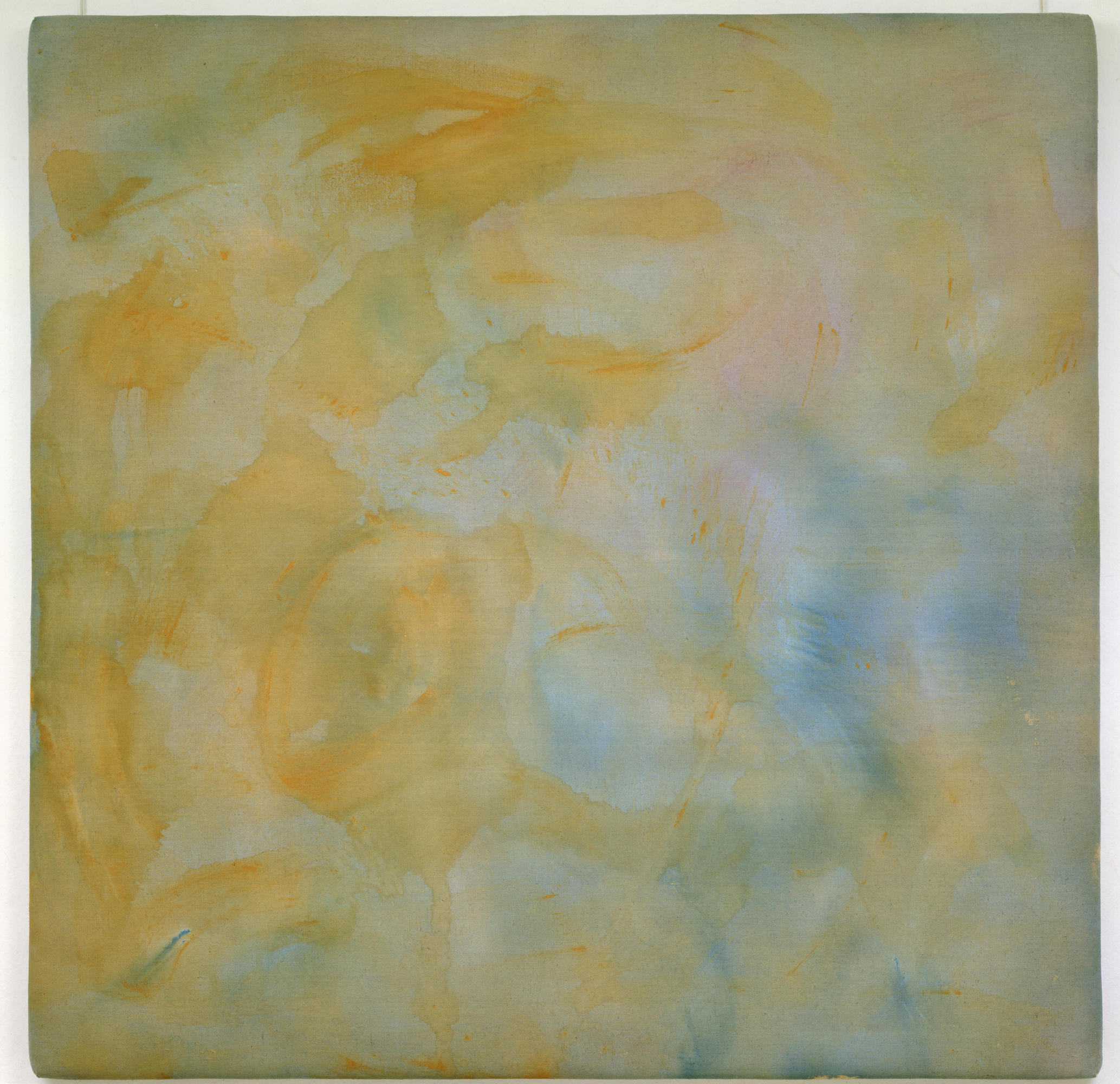Gotthard Graubner
Tojama II (color space body), 1984
Artist
Gotthard Graubner
Title
Tojama II (color space body)
Year of creation
1984
Technique and dimensions
Oil and pigment over synthetic cotton, 200 x 200 cm
Year of acquisition
1985
Gotthard Graubner, a student of the almost unjustly forgotten Dresden painter Wilhelm Rudolph, calls his works created since 1970 “color space bodies”, sometimes also “color bodies”. They were preceded by flat color spaces and haptic color bodies, which he now brought together. In its synthesis of color, space and body, “Colour Space Body” describes very precisely Graubner's concerns at a time in which painting culture seems to be becoming increasingly unimportant.
A curved body is covered by a shimmering thin colored skin. As if moved by a gentle wind, fine veils of color float and dance in an unbounded space towards a visionary depth. In constant change, from warm to cold, from outside to inside, from delicate yellow to bright orange, they revolve around violet, blue and turquoise. They also bypass some places and leave traces of their movement on the light blue background of the canvas, towards the imaginary pull of the center. On their path, which is not restricted by any frame, they combine into forms, separate and combine to form something new, or disappear into nirvana. The absorbent base made of synthetic cotton gives and takes away the physicality of the color and reinforces the colors' inherent illusory power of distance and closeness, of shape and vision. During weeks of work, the artist applied layers upon layers of transparent colors from all sides to the image body lying on the floor of his studio - which had previously been covered with canvas, synthetic cotton wool and canvas again - first with broom brushes, then with finer ones, which now and then let the brushwork shine through , on top of each other to achieve this effect.
The color space bodies created in this complex process primarily serve one goal: the liberation of the material and spiritual life of color. This is Graubner's real theme, and this is his contribution to 20th century art. However, this freedom of color does not contradict the association of landscape phenomena, as suggested by the title. On the contrary, it is the color's own life that opens the door to imagination.
With the mysterious sound of Asian names, Graubner has been inviting people to meditate on his internalized emotional images since the late 1970s. Tojama is the name of a Japanese city in the lowlands of Hondo. A study trip took the artist there in 1984. Under the impressions of the Far Eastern landscape and culture, this quiet and monumental work of animated color was created, the acquisition of which the National Gallery owes to the Association of Friends.
Friedegund Weidemann
